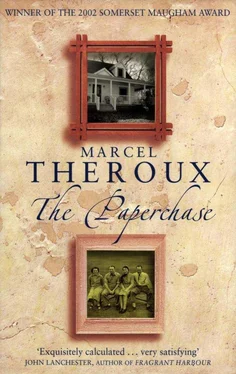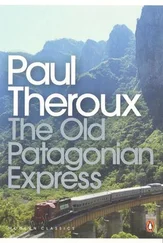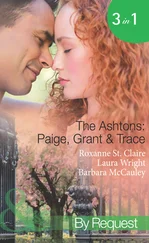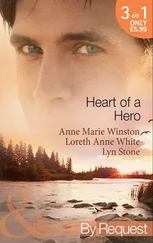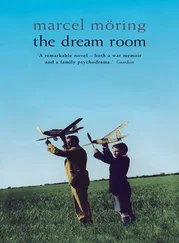He taught his lessons in a perfunctory way and saved his energy for the evenings when he would write in longhand at the kitchen table of his tiny one-room apartment. He used the same long yellow legal pads my father used for his work.
The first draft of Peanut Gatherers was finished in less than three months. It’s a remarkable fact — all the more so when you consider that Patrick struggled to finish anything else for the rest of his career. He was borne along by alternating spells of fear and enthusiasm. He once compared writing to a walk that began as a gentle downhill stroll in sunshine and quickly became an uphill struggle against worsening weather and diminishing light. What kept him going, I think, was the fear of adding another failure to the train he felt he dragged along behind him.
It is a novel about an innocent abroad, drawing heavily from Patrick’s own experiences as a teacher in Western Samoa. He took advantage of the increasingly liberal sexual climate of the time to write frankly (and titillatingly) about the customs of the island and the adventures of its protagonist, Horace: the apparently innocent title is a punning allusion to a Samoan sexual custom.
Peanut Gatherers is a great book. It’s written in a breezy style that’s quite uncharacteristic of Patrick and is full of mischievous humour. There’s a funny section about two witch-doctors who conduct a necromantic mind duel from their respective huts over the ownership of a Boston Red Sox baseball cap. In my favourite episode, a missionary from Utah gets Horace to help him translate the Book of Mormon into Samoan. Horace sabotages the translation, filling it with swear-words and nonsensical idioms. There’s a brilliant set-piece where the missionary reads the translated book to a church full of incredulous locals. (‘My manly element is as kinked as a taro root. I allow eunuchs to pleasure my rectum with green bananas. May ringworm visit my mother’s descendants unto the fifth generation.’) His services become the most popular events on the island. At each one, members of the congregation cry and wet themselves from laughter and the missionary thinks they’re being visited by the Holy Ghost.
The book was quickly accepted by a Boston publishing house. It didn’t sell particularly well, but by one of those twists of good fortune which had so far been absent from Patrick’s life story, the rights were bought outright by a Hollywood studio for a fairly considerable sum. Patrick was given a lot of money to write the screenplay, and then when he and the executives found themselves at loggerheads, he was given even more not to write it.
Peanut Gatherers opened in 1966 as one of the last big-budget Technicolor musicals just as old Hollywood was about to be swept by a new avant-garde. It bombed at the box office but was nominated for two technical Oscars — set design and make-up.
Patrick had long before dissociated himself from the movie. His experience of Hollywood soured him and brought out an ugly — and uncharacteristic — streak of anti-Semitism. One of his pet projects was a list he kept of important figures in the film business and their original, Jewish, surnames.
His subsequent books were either unreadable or unpublishable: a libellous roman-à-clef about Hollywood; a novel about Button Gwynett — one of the signatories to the Declaration of Independence; a stream-of-consciousness novel about a left-handed hero that would be written in mirror-writing.
With many of these ideas, it was almost as though he was avenging himself on the approachability of the novel that had brought him his first success. As he got older, and none of his books gained an audience, he found himself in the perplexing position of being haunted by his own ghost, the ghost of a successful young novelist.
He did write children’s stories and publish books of poetry privately. But what literary reputation he enjoyed was damaged by the whole scandal over Amazon Basin.
Amazon Basin was — even by Patrick’s standards — a strange book. It purported to be a straight account of a journey through the Brazilian rain forest, but almost as soon as it was published a few careful readers had written to point out that the whole middle section had been lifted, unchanged, from a 1920s travelogue called I Married a Headhunter by a woman named Edna Beveridge.
This is odd for two reasons. Firstly, the plagiarised section of Patrick’s book is easily the worst thing in it. The beginning and end of Amazon Basin together form a wonderful long essay about the nature of travel writing itself. The opening chapter (‘The Fiction of Solitude’) argues that all travelling is really a version of a more profound interior journey; that we are all, always, ‘travelling’ in this way; and that an unknown country is just a screen on which the traveller encounters his own fantasies. Patrick’s version of this idea was a very extreme one. He insisted that all travel writing was actually fiction. Since the true subject of every journey is the consciousness of the traveller, he wrote, patently untrue tales of sea monsters and flying islands are actually more valid than ‘accurate’ accounts of places and customs. The conscious fabricator is more aware of his real theme than the traveller who mistakes his perceptions for objective reality. It’s a dense and peculiar piece of writing which draws on phenomenology, medieval travel writing, the Vinland sagas, fake maps, budget guidebooks, the works of T. E. Lawrence and Sir Richard Burton and the logbooks of Donald Crowhurst — the yachtsman who went crazy during a solo circumnavigation of the world.
‘The Fiction of Solitude’ convinced at least one person that all travel was really unnecessary. Having written the chapter, Patrick didn’t bother leaving Massachusetts to write about Brazil. He just slapped someone else’s travel book into the middle of his own, as though his only concern was fulfilling his contractual obligations to his publisher.
The second strange thing is that I Married a Headhunter is not even a book about Brazil, it’s a book about the dayaks of Borneo.
Amazon Basin was eventually withdrawn. It has a certain cachet with collectors.
Subsequent projected volumes included a Comparative Dictionary of Onomatopoeia — Vivian said it would be Finnegans Wake without the laughs; a novel about a woman who runs a marathon within two hours — the action was to be set within the time frame of the marathon with flashbacks; and a book that was actually a kaleidoscope, its pages to be sheets of textured and coloured glass that could be shuffled to produce different optical effects.
Thinking about the windfall that had altered Patrick’s life, I couldn’t help comparing it to the one that had altered mine. Luck — whether apparently good or bad — has a way of reversing itself in its consequences; and then repeating the trick. I wouldn’t say that it was completely bad for Patrick, but the independence he got in this unanticipated and unlooked-for way exacerbated a dangerous part of his character. Money had released Patrick from any dependency, but it meant that he had been able to give up living, in the way that most people understand the word. He’d locked himself away; had become as autochthonous as a heartbeat or a self-winding watch. But why? ‘He lacked hunger’ was what my father had said. It seemed improbable to me.
These were the bare outlines of my uncle’s life as I knew them. I was aware of gaps and missing years; episodes that blurred into one another; contradictions of time and place. What I knew, I knew imperfectly, and I was sometimes confronted with objects that showed the limits of my knowledge.
One evening, looking for a book to read, I found an album of photographs on one of the shelves in the library. They were of Patrick and my father some time in the 1950s. I knew instantly they had been taken in London, in winter or early spring. It was something about the colours. A rainy London day has a very specific palette. And the two brothers had the wintry, grey faces of early morning commuters. I turned the page, idly wondering who had taken the pictures, and saw two or three more, all in the same location (Wandsworth or Streatham Common?). These were all permutations of three people: Patrick, my father and my mother — looking improbably blonde and pretty. There were perhaps ten pictures of them, and the last two showed all three of them standing together. They were smiling awkwardly in the first — at whoever had been corralled into taking the picture — the second had been taken immediately after, and already the pose of the first had begun to dissolve, my father had turned away from the camera, my mother’s eyes were closed as she laughed and brushed her hair out of her face. Patrick’s hand was on her shoulder, and he looked absently across the frame.
Читать дальше
